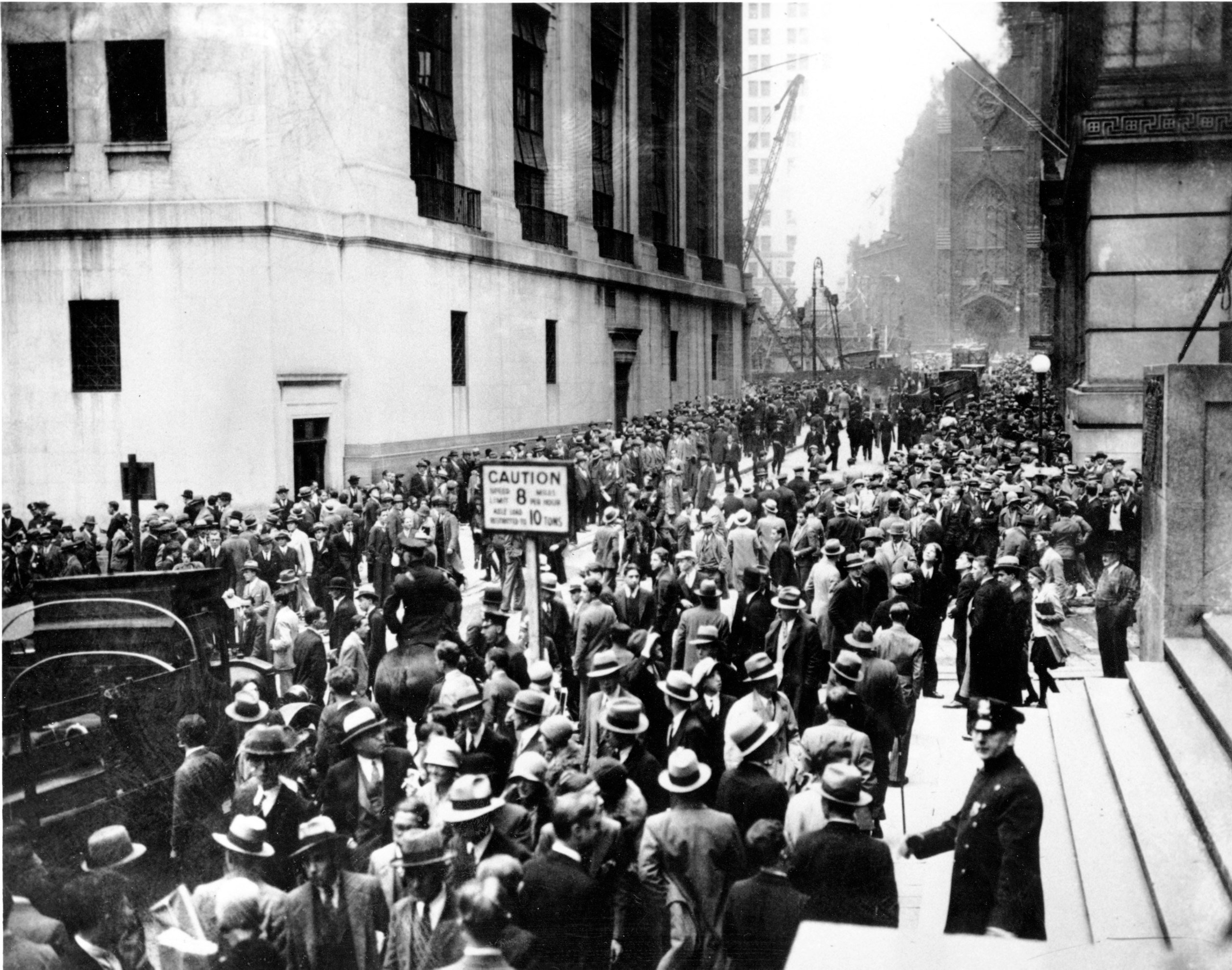
This week marks the anniversary of the 1929 Wall Street Crash that plunged America into the Great Depression. It began on October 24th with the drastic fall of share prices on the New York stock exchange. Black Thursday, as it came to be known, marked the end of the excessive lifestyle that so many had enjoyed during a decade of prosperity.
There were three dates, to be specific, that will forever be remembered in history. The first was October 24th, the second October 28th, and the third, October 29th. Each was another nail in the coffin in which the once unrivaled U.S. stock market would soon lay.
The collapse of the Greek economy was, in some ways, similar to the Wall Street Crash of 1929. Yet, nothing can compare to the rapidity with which America was brought to its knees in almost a single day.
Wall Street and the Great Crash of 1929

The boom the U.S. stock market had experienced during the Roaring 1920s came to an abrupt end on the 24th of October. That was the day the Dow dropped by eleven percent after opening at 305.85. This signaled a strong correction in the market, and trading was three times as much as normal. Wall Street bankers, growing increasingly anxiously, quickly bought up shares to plug the hole left behind by rapidly draining confidence in the market. It worked if only on a short-term basis.
On Friday, October 25th, the markets continued to follow the same positive momentum. On October 28th, however, on Black Monday, the Dow Jones fell by almost 13.47 percent to 260.64. Then, on October 29th on Black Tuesday, it plunged another 11.7 percent to 230.07. By October 30th, investors began the mad rush to sell. In total, an astonishing 16,410,030 shares exchanged feverish hands.
A perfect orgy of speculation

Wall Street crashed in one week. Yet, the build up to the financial disaster had been going on for months. In September of 1929, the Dow Jones Indices had already drastically dropped by 28 percent from an earlier high. Then, in late September, the London Stock Exchange started showing rapid declines. Investors in the Clarence Hatry United Steel company lost billions, for example, when they realized the capital used to buy the enterprise had been fraudulent.
In response, British Chancellor of the Exchequer Philip Snowden described the American stock market as “a perfect orgy of speculation,” which proved correct. The U.S. Treasury Department had already commenced to take a closer look at the markets and its Secretary, Andrew Mellon, stated with some concern that American investors “acted as if the price of securities would infinitely advance.” This was a statement which immediately saw the Dow drop.
American newspapers had also started to criticize the wildly inflated market speculations. Indeed, on October 23rd, The Washington Post declared “Huge Selling Wave Creates Near-Panic as Stocks Collapse” in one of its headlines. Not to be outdone, The Times announced “Prices of Stocks Crash in Heavy Liquidation” in another headline. A day later, the asset bubble that had continuously gone up twenty percent yearly since 1922 finally climaxed.
The Great Depression

The Wall Street Crash of 1929 wreaked havoc on the finances of Americans across every class spectrum. From the rich to the poor, people saw their life savings wiped out in a single day. The faith lost in the markets would last for another decade.
The average wage fell by almost forty-two percent. Simultaneously, unemployment rose by twenty-five percent. America’s economic growth dropped 54.7 percent while world trade dropped by sixty-five percent. Deflation, as a consequence, immediately led to prices falling by ten percent for the next four years.
The Great Depression lasted from 1929 until 1939 although, in 1933, there were signs of the slow start of recovery under President Roosevelt. Roosevelt’s New Deal policies helped accelerate, if not create, the conditions necessary for the process. That, along with the Baking Actor of 1935, helped generate an upward trend in GDP in 1938. Yet, it was only the dawn of WWII that brought the long sundown of the depression to its finale.
Volatile stock markets and high speculation are usually to blame and, unfortunately, have lead to several similar financial disasters in America and Europe over the past few years. There was the 2007 to 2008 subprime crisis, and, today, cryptocurrency seems to be heading the same way. The pandemic and Russia’s attack on Ukraine have also recently caused markets to plunge as investors panic.
See all the latest news from Greece and the world at Greekreporter.com. Contact our newsroom to report an update or send your story, photos and videos. Follow GR on Google News and subscribe here to our daily email!



